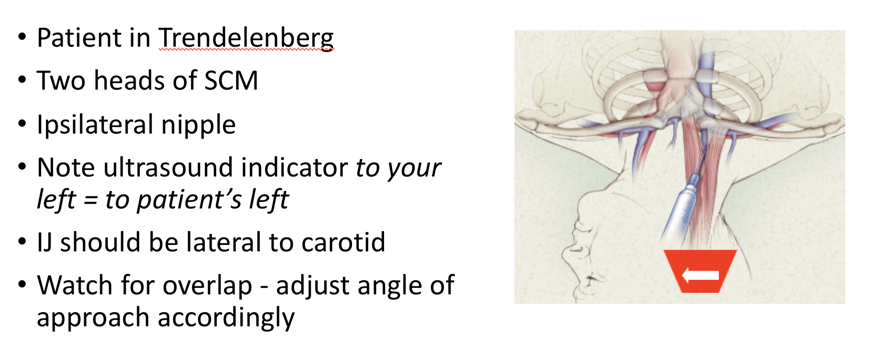IJ Access
Internal Jugular (IJ) - Technique

Narration
So once you've mastered doing peripheral vascular access using ultrasound, the other procedures are going to be easier. This is one of the more common ways to approach central venous access using ultrasound which is the IJ approach. The nice thing about this is there are no bones in the way and using ultrasound guidance on the neck can certainly help you get to the right place. So you are going to position yourself at the head of the bed and the key with this is that the ultrasound probe should be to your left so you're looking down the patient and this is one case where the indicator is actually also to the patient’s left. So landmark technique: you find the two heads of the sternocleidomastoid and direct the needle towards the ipsilateral nipple. Note that in this case we are the using ultrasound to find the IJ vessel, it should be lateral to the carotid, and watch for overlap and adjust your angle of approach accordingly so if you do happen to back wall the vein you don't end up in the artery.
Internal Jugular (IJ) - Access
Narration
So here we see the needle going into the IJ we're kind of scanning along and we're also collapsing that vessel. We can tell it is a vein because it collapses easily and then we're following this needle down and getting it into the vessel to find the vanishing target sign.